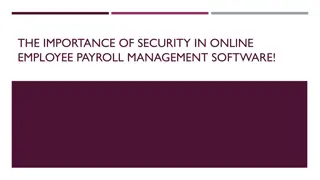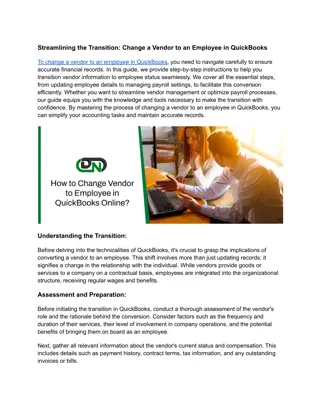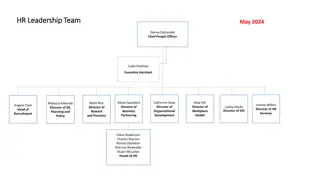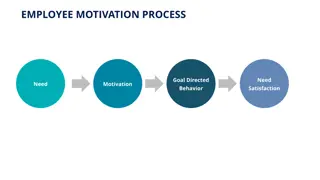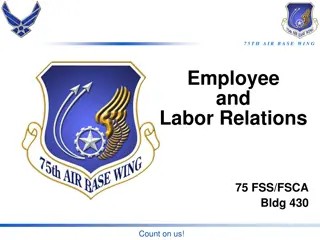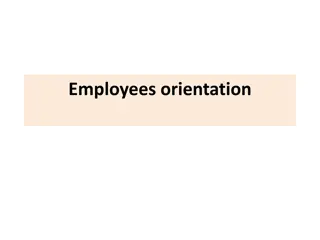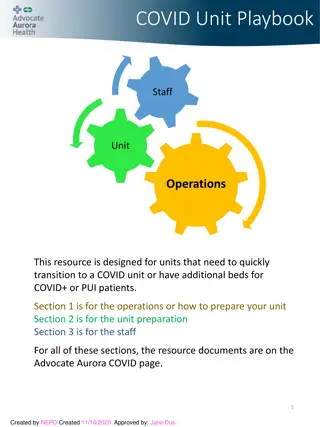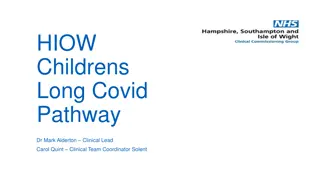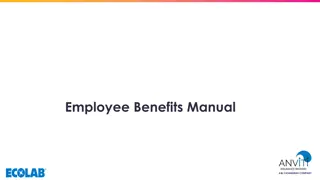Essential COVID-19 Employee Training Guide
This comprehensive employee training guide covers COVID-19 protection measures, workplace hazards, symptoms to watch out for, high-risk groups, common health conditions with higher risks, emergency warning signs, COVID-19 spread, and distinguishing between COVID-19 and allergies. It emphasizes the importance of knowing how COVID-19 spreads and understanding emergency warning signs, especially for high-risk individuals.
Download Presentation

Please find below an Image/Link to download the presentation.
The content on the website is provided AS IS for your information and personal use only. It may not be sold, licensed, or shared on other websites without obtaining consent from the author.If you encounter any issues during the download, it is possible that the publisher has removed the file from their server.
You are allowed to download the files provided on this website for personal or commercial use, subject to the condition that they are used lawfully. All files are the property of their respective owners.
The content on the website is provided AS IS for your information and personal use only. It may not be sold, licensed, or shared on other websites without obtaining consent from the author.
E N D
Presentation Transcript
COVID-19 Employee Training March 2024 All photos from Adobe Stock unless otherwise indicated.
This training will cover: How to protect yourself from getting COVID-19 Our COVID-19 policies and procedures What to do if you get sick 2
COVID-19 remains a workplace hazard Symptoms vary between people: Mild symptoms similar to common colds or allergies to no symptoms (asymptomatic) In other people, it can cause a very serious health effects or death. Note: The virus continues to change new variants still emerging. It s possible to have COVID-19 multiple times. Graphic from the CDC 3
Watch out for these symptoms Fever or chills Fatigue Sore throat Cough Headache Diarrhea Congestion Runny nose Nausea Vomiting Muscle aches Body aches New loss of taste or smell 4
You have a higher risk for serious illness if you are: An older adult Pregnant or recently pregnant Immunocompromised Have certain health conditions 5
Common Health Conditions with Higher Risks of Serious Illness Asthma Overweight Diabetes, Type 1 or 2 Smoker current or former Alcohol or drug abuse Chronic lung, heart, liver or kidney disease 6
Emergency Warning Signs Labored breathing Pain or pressure in the chest Sudden confusion Not waking up or able to stay awake. Lethargy or drowsiness Pale, gray, or blue-colored skin, lips, or nail beds (depending on skin tone) 7
Is it allergies or is it COVID-19? From one illness to an outbreak 9 Graphic from the CDC/ Photo from L&I
Germs can spread when you: Are close to a sick person especially if they are coughing or sneezing. Touch your eyes, nose, and mouth with unwashed hands Prepare or eat food and drinks with unwashed hands Touch dirty surfaces 10
Wash Your Hands Often Photo from the CDC 11
COVID-19 Vaccines and Boosters COVID-19 vaccines and boosters can help protect you from serious health effects and long term illness caused by COVID-19. Photo from the CDC 12
What to do if you feel sick If you believe you may have COVID-19, stay home! Tell your supervisor, if you get sick. 13
Our Cleaning Practices [Insert and describe your specific cleaning practices here (Use Text Box)] : 14
Our COVID-19 Spread Prevention Strategies Health Screening Barriers & Ventilation Vaccines Facemasks & Respirators Physical Distancing Cleaning & Disinfecting 15
Our Requirements & Procedures [ Insert your workplace specific policies from your Accident Prevention Program that related to limiting the spread of COVID-19.] 16
Ways to Protect Yourself Keep vaccines updated Wear a respirator Practice 6 feet social distancing Wash your hands often with soap for 20 seconds Keep surfaces and tools clean Stay home if you are sick 17
Facemasks versus Respirators Surgical Mask Respirator 18
Respirators Respirators have two straps that go around the head and neck to keep the masks in place. NIOSH evaluates performance of respirators in the US. Each approved respirator has a NIOSH approval number on the mask. 19
Our Respirator Policies and Procedures Describe here: The types of respirators selected/used Where you require the use of respirators Your voluntary use of respirators (if applicable). 20
Respiratory Protection Training [Complete Respiratory Protection Training Module(s) for the respirators worn in your workplace. See Training Kits (wa.gov) scroll down to Respiratory protection and select the corresponding module.] 21
Questions? Photo from CDC Photo from OSHA 22


